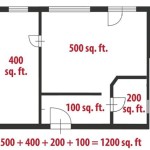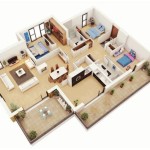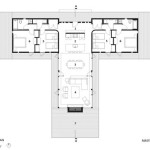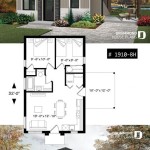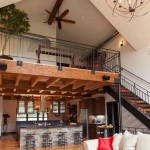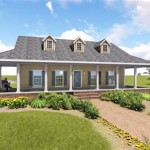Pool House Plans With Barriers: Integrating Safety and Style
The integration of a pool into a residential landscape represents a significant investment in leisure and recreation. However, the presence of a pool also introduces potential safety hazards, particularly for young children and pets. Consequently, incorporating safety barriers into pool house plans is not merely a prudent consideration but, in many jurisdictions, a legal requirement. This article explores the diverse options available for integrating safety barriers seamlessly into pool house designs, balancing aesthetic appeal with functional protection.
Pool house design considerations often encompass factors such as the intended use of the space, the style of the main residence, and the overall landscape architecture. When safety barriers are factored in from the initial design phase, it allows for a more cohesive and aesthetically pleasing outcome. Retrofitting barriers after the pool and pool house are already constructed can often appear less integrated and potentially require more extensive and costly modifications.
Effective pool safety barriers adhere to stringent standards designed to prevent unsupervised access to the pool area. These standards typically outline specific requirements regarding height, spacing, latching mechanisms, and proximity to the pool. Compliance with these regulations is crucial to ensure the safety of children and pets and to avoid potential legal ramifications.
Understanding Legal Requirements for Pool Barriers
Prior to commencing any pool or pool house construction, it is imperative to thoroughly investigate the local building codes and regulations pertaining to pool safety barriers. These regulations vary significantly from one jurisdiction to another. Some common elements addressed within these regulations include minimum fence heights, typically ranging from 4 to 6 feet; self-closing and self-latching gates that open outward, away from the pool area; maximum vertical clearance between the bottom of the fence and the ground; and limitations on the size of openings in the fence to prevent children from squeezing through.
Furthermore, regulations may specify the acceptable distance between the pool barrier and any permanent structures or landscape features that could be used to climb over the barrier. This includes items such as trees, shrubs, furniture, and even adjacent walls. The intent is to eliminate any potential means of circumventing the barrier. Failure to comply with these regulations can result in fines, delays in construction, and potentially the requirement to dismantle and rebuild non-compliant elements.
Homeowners are strongly advised to consult with local building inspectors or qualified contractors who are familiar with the specific pool barrier regulations in their area. This consultation should occur during the initial planning stages to ensure that the proposed pool house design meets all necessary safety requirements.
Types of Pool Barriers and Their Integration into Pool House Plans
A variety of pool barrier options are available, each offering different aesthetic and functional characteristics. The selection of the appropriate barrier type should be carefully considered to complement the overall pool house design and landscape architecture. Some of the most common types of pool barriers include:
Fencing: Fencing is the most prevalent type of pool barrier. It offers a range of materials, styles, and colors to suit various aesthetic preferences. Common materials include wrought iron, aluminum, wood, and mesh. Wrought iron fencing provides a classic and elegant look, while aluminum fencing offers durability and low maintenance. Wood fencing can be customized to match the architectural style of the pool house, but it requires regular maintenance to prevent rot and decay. Mesh fencing is a lightweight and relatively inexpensive option, often used as a temporary or removable barrier.
Integrating fencing into pool house plans involves careful consideration of the fence's location, height, and style. The fence should be positioned to completely enclose the pool area, preventing access from all sides. The height of the fence must comply with local regulations, and the style should complement the overall design aesthetic. For example, a wrought iron fence might be appropriate for a traditional or formal pool house, while a wood fence might be more suitable for a rustic or contemporary design.
Pool Covers: Automatic or manual pool covers offer an additional layer of safety and can reduce water evaporation and heating costs. Automatic pool covers provide the highest level of convenience and safety, as they can be opened and closed with the push of a button. However, they are also more expensive than manual covers. Manual pool covers require physical effort to open and close but are a more affordable option. When closed and properly secured, pool covers can prevent accidental falls into the pool water.
Integrating pool covers into pool house plans requires careful consideration of the cover's type, size, and operating mechanism. The pool cover should be sized to completely cover the pool, and the operating mechanism should be easily accessible and functional. Automatic pool covers typically require a dedicated housing unit to accommodate the cover when it is open. This housing unit should be integrated seamlessly into the pool house design to minimize its visual impact.
Pool Nets: Pool nets are a lightweight and relatively inexpensive option for preventing accidental falls into the pool. They consist of a mesh net that is stretched tautly over the pool surface and secured to anchors around the perimeter. Pool nets are not as aesthetically pleasing as other barrier options, but they can provide a temporary or supplementary layer of safety. They are particularly useful for preventing access to the pool by young children and pets.
Integrating pool nets into pool house plans is relatively straightforward. The net can be installed and removed as needed, and it does not require any permanent modifications to the pool or pool house. However, it is important to ensure that the net is properly secured and maintained to prevent it from sagging or tearing.
Natural Barriers: In some instances, landscape design can be employed to create natural barriers around the pool area. Dense plantings, such as hedges or shrubs, can serve as a visual and physical deterrent to pool access. However, it is important to note that natural barriers may not meet the requirements of all local regulations, particularly those relating to minimum fence heights and spacing. In addition, natural barriers require ongoing maintenance to ensure that they remain dense and impenetrable.
Integrating natural barriers into pool house plans involves careful selection of plant species and strategic placement of plantings. The selected plant species should be dense, thorny, or otherwise unappealing to touch. The plantings should be positioned to create a continuous barrier around the pool area, preventing access from all sides. Regular pruning and maintenance are essential to maintain the effectiveness of the natural barrier.
Aesthetic Considerations in Pool Barrier Design
While safety is the primary concern when selecting pool barriers, aesthetic considerations are also important. The pool barrier should complement the overall design of the pool house and landscape, enhancing the aesthetic appeal of the outdoor space. Several design strategies can be employed to achieve this balance.
Material Selection: The choice of materials for the pool barrier has a significant impact on its aesthetic appeal. Wrought iron fencing provides a classic and elegant look, while aluminum fencing offers a more contemporary and minimalist aesthetic. Wood fencing can be customized to match the architectural style of the pool house, but it requires regular maintenance. The selection of materials should be based on the overall design aesthetic of the outdoor space.
Color Coordination: The color of the pool barrier should complement the colors of the pool house, landscape, and surrounding structures. Neutral colors, such as black, white, and gray, are often a safe and versatile choice. However, bolder colors can be used to create a more dramatic or playful effect. It is important to consider the overall color palette of the outdoor space when selecting the color of the pool barrier.
Style Integration: The style of the pool barrier should be consistent with the architectural style of the pool house. For example, a traditional pool house might benefit from a wrought iron fence with ornate details, while a contemporary pool house might be better suited to a sleek and minimalist aluminum fence. The style of the pool barrier should enhance the overall aesthetic appeal of the outdoor space.
Landscaping: Landscaping can be used to soften the appearance of the pool barrier and integrate it more seamlessly into the surrounding environment. Planting flowers, shrubs, and trees around the base of the barrier can help to camouflage its presence and create a more natural and inviting atmosphere. The landscaping should be carefully planned to ensure that it does not obstruct sightlines or compromise the effectiveness of the barrier.
Gate Design: The design of the pool gate is an important aesthetic consideration. The gate should be visually appealing and easy to use. It should also comply with all local regulations regarding self-closing and self-latching mechanisms. The gate can be customized to match the style of the pool barrier or to create a focal point in the landscape. Decorative hardware, such as handles and hinges, can add a touch of elegance and sophistication.
By carefully considering these aesthetic factors, it is possible to design pool barriers that are both safe and visually appealing, enhancing the overall enjoyment of the outdoor space.
In conclusion, integrating pool safety barriers into pool house plans is a multifaceted process that requires careful consideration of legal requirements, barrier types, and aesthetic considerations. Homeowners should work closely with qualified professionals to ensure that their pool area is both safe and aesthetically pleasing.

Pool House Plans Plan With Bar Grill 062p 0006 At Www Theprojectplan Com

No Barriers Indoor Outdoor Living Trends For 2024 Pool House Designs Plans Design

Pool House With Half Bath And Cover Bar Area 68959vr Architectural Designs Plans

Untitled

Indoor Swimming Pools House Plans And More

How To Ensure The Pool Landscaping Matches Your House Design Barrier Reef Pools

Pool House Plan Meyers

Modern Pool House Plan With A Bar And Covered Patio Harmon

New House Plans Why A Swimming Pool Should Be On Top Of Your List Barrier Reef Pools

Pool House Plans Plan With Bar Grill 062p 0006 At Www Theprojectplan Com
Related Posts

